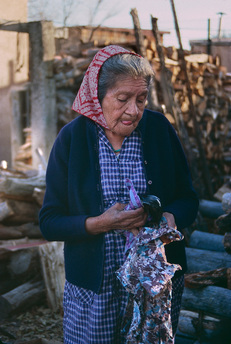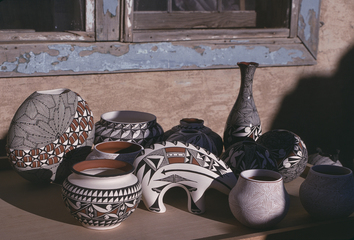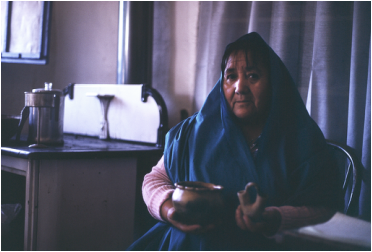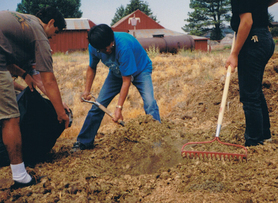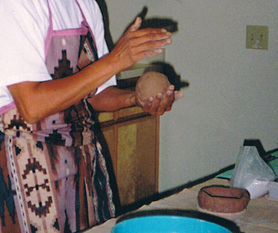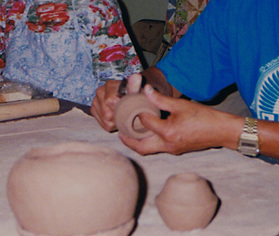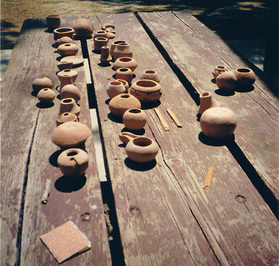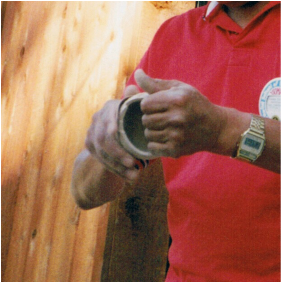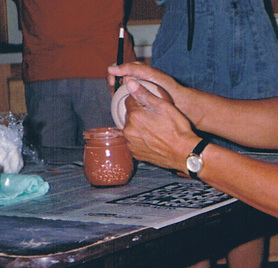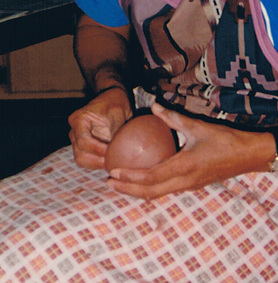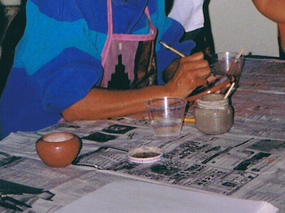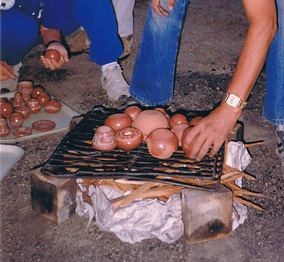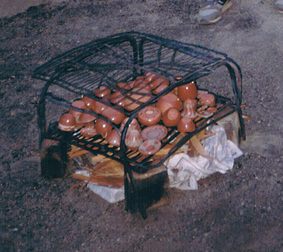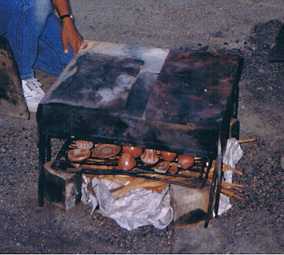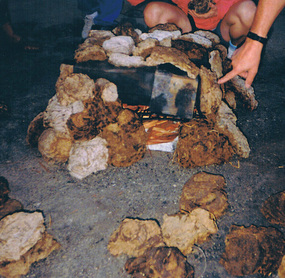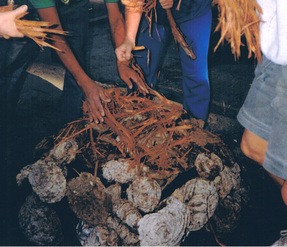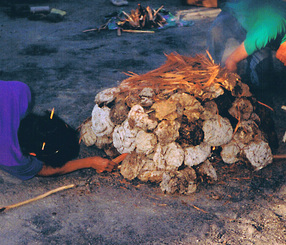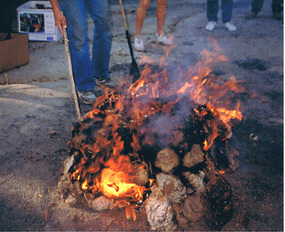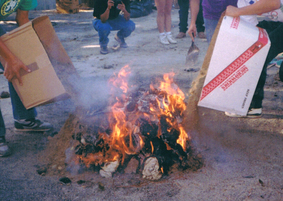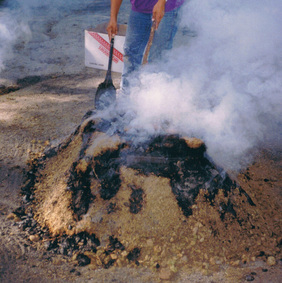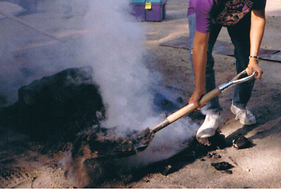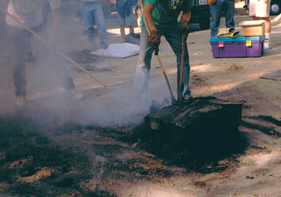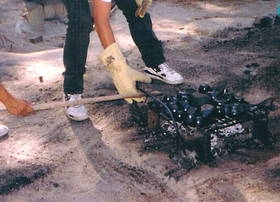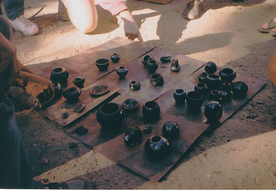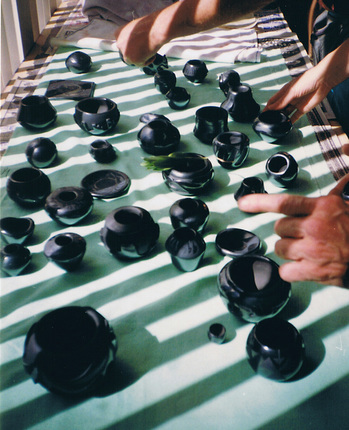Making Pottery
Different pueblos are known for different styles of pottery. For example, Santa Clara Pueblo and San Ildefonso Pueblo are most well-known for their black-on-black pottery, while the Hopi and Acoma Pueblo are known for their polychrome, or multi-colored, pottery. Jemez is famous for their storytellers and at the Taos Pueblo, potters often use clay with a lot of the mineral mica in it. This causes their pots to sparkle in the sunlight.
Traditional pottery is all handmade using tools directly created from natural materials. At ISOMATA in Idyllwild, CA, I took two courses in pottery-making from the Calabaza family from San Ildefonso Pueblo. Their mother, Blue Corn, was well-known for her beautiful pottery. What a fun class!
Below are the basic steps we learned during the class:
|
9. When all your designs are finished, it's time to fire the pot! There are many factors to think about when firing pots, like weather, humidity, and air temperature. If it is a good day for firing, place the pot or pots on a metal grate above paper and kindling (small pieces of wood which are easy to burn). |
All text and images – © 2015 by Pauline Ts'o. All rights reserved.

